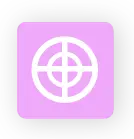Remote patient monitoring (RPM) has emerged as a crucial solution for healthcare providers who want to improve their patient experience while simultaneously receiving additional revenue. When considering the implementation of an RPM program, choosing the right vendor is paramount.
This article aims to guide healthcare providers through 10 essential questions to ask when selecting an RPM vendor. By exploring the concept of remote patient monitoring vendors, understanding the benefits of outsourcing, and recognizing the challenges involved, providers can make informed decisions and maximize the potential of remote patient monitoring.
Save Time and Get Your Answers Faster
Challenges of Outsourcing Remote Patient Monitoring to Vendors
Challenges of Outsourcing Remote Patient Monitoring to Vendors
Data Security and Privacy
Sharing patient data with an RPM vendor requires adherence to strict security and privacy regulations. Providers should ensure that vendors have robust data protection measures in place.
Vendor Selection
Choosing the right RPM vendor can be overwhelming. Providers should evaluate vendors based on their expertise, track record, reputation, and compatibility with existing systems.
Customization and Scalability
Providers must assess whether vendors can customize their offerings to align with specific needs and accommodate future growth. Scalability is crucial to ensure the RPM program can expand as the patient population increases.
Technical Support and Training
Providers should inquire about the level of technical support and training vendors provide to ensure smooth implementation and ongoing management of the RPM program.
Integration with Existing Systems
Integration with EHR systems and other healthcare technologies is vital for efficient data exchange and streamlined workflows. Providers should evaluate vendors based on their ability to integrate seamlessly with existing systems.
10 Questions to Ask Before Choosing a Remote Patient Monitoring (RPM) Vendor

1. What is your experience in providing remote patient monitoring solutions?
2. Can you demonstrate successful outcomes and improved patient satisfaction with your RPM program?
3. How do you ensure the security and privacy of patient data?
Patient data security is of utmost importance when implementing remote patient monitoring. Inquire about the vendor’s security protocols, data encryption methods, and compliance with relevant regulations, such as HIPAA. Seek information about their data storage practices, access controls, and measures to safeguard patient privacy.
4. Do you offer customizable solutions to meet our specific needs?
5. Can you integrate with our existing EHR system?
Seamless integration between the remote patient monitoring system and your existing electronic health records (EHR) system is crucial for efficient data exchange and streamlined workflows. Ask the vendor about their experience with EHR integration, the compatibility of their system with various EHR platforms, and how they ensure smooth interoperability. Learn more about how to select an EHR.
6. What is the pricing structure for your RPM services?
7. How do you handle technical support and training for healthcare providers and patients?
Technical support and training are critical for a successful RPM program. Ask the vendor about their support mechanisms, response times, and availability of dedicated support staff. Inquire about the training provided to healthcare providers and patients on using remote monitoring devices, interpreting data, and troubleshooting common issues.
8. What is your approach to patient adherence and engagement?
9. Do you partner with healthcare systems or other providers in our region?
Partnerships with healthcare systems or other providers in your region can indicate the vendor’s credibility and ability to work within the local healthcare ecosystem. Inquire about any existing collaborations or partnerships that can enhance the quality and scope of the remote patient monitoring program.
10. How do you stay up-to-date with the latest technologies and regulations in remote patient monitoring?
Remote patient monitoring is rapidly evolving, and vendors must stay updated with the latest technologies and regulatory changes. Ask the vendor about their commitment to ongoing research, development, and staying compliant with industry standards. Inquire about their participation in conferences, partnerships with technology providers, or involvement with industry organizations.
By asking these ten questions, healthcare providers can understand the RPM vendor’s capabilities, experience, security measures, customization options, integration capabilities, pricing, support, patient engagement strategies, local partnerships, and commitment to innovation. Evaluating the responses will help you make an informed decision and choose the RPM vendor that best aligns with your organization’s needs and goals.
Which Remote Patient Monitoring Vendors Should I Choose?
After asking the vendor the questions mentioned above, healthcare providers would be able to separate the wheat from the chaff—the preferred vendors from the rest. Evaluating multiple vendors and seeking references from other healthcare systems can help make an informed decision.
After 12+ years of serving the healthcare industry across the USA, Neolytix ticks all the boxes relating to expertise, track record, security measures, scalability, integration capabilities, pricing structure, technical support, patient engagement strategies, and industry partnerships.
Summary
In the realm of remote patient monitoring, selecting the right vendor is vital for the success of healthcare providers. By partnering with a Remote Patient Monitoring vendor, providers can access expertise, resources, and technologies that enhance patient care, reduce costs, and improve outcomes. However, challenges such as data security, vendor selection, customization, and integration must be carefully evaluated.
Schedule a free, no-obligation consultation and learn how Neolytix can assist in reaching your long-term goals of improved revenue and a better patient experience.
Schedule a Free Consultation to learn more
Complete the form and someone from our team will be in touch with you!



